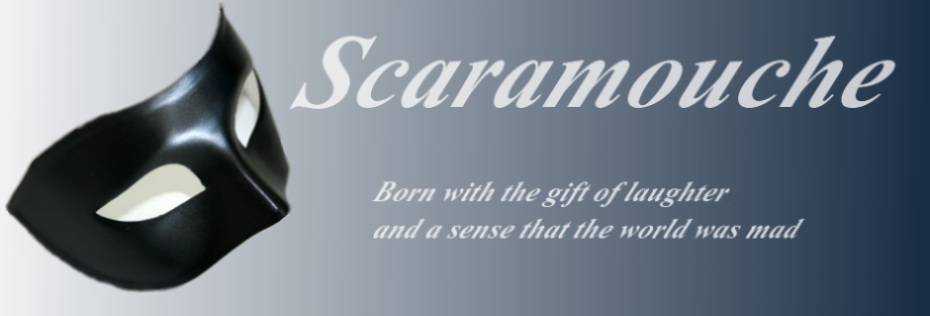Maclean’s, the prestigious Canadian magazine, published an extract from his well-known bestseller America Alone — there’s no doubting that he criticizes and even laughs at Islamists in the book — whereupon assorted Human Rights Commissions in Canada fell on Mark and Maclean’s: There’s a code with a Section 13 that prevents free speech, and there is someone called Richard Warman, a former employee of the Canadian Human Rights Commission who has been a plaintiff on every single Section 13 case in the last six years. Where did this lord of the printed word spring from? He and several others badly wanted to suppress Mark, and they had Muslim accomplices.Close, but I fear Pryce-Jones has missed a few critical subtleties, which I am more than happy to supply.
1) I'm not sure that "prestigious" is the right adjective with which to describe Maclean's. Sure, it's been around a long time, but it's the Canadian equivalent, more or less, of TIME or Newsweek, and you'd hardly use that word to describe either of those publications.
2) The "code" with a Section 13 is the Canadian Human Rights Act. Section 13.1 of that act (which is federal legistlation, but which has equivalents in every province and territory) "states that it is discriminatory to communicate by phone or Internet any material 'that is likely to expose a person or persons to hatred or contempt.'" It's that "likely to expose" part that's been especially problematic as it refers to something that has not yet occurred, that, indeed, may never occur, but that nonetheless can put a chill on contempory expression, since who's to know if what's said today could expose someone to "hatred or contempt" (or? aren't they the same?) at some unspecified point in the future. In the Minority Report sense, it's a "precrime"--in other words, something that was sheer science fiction until Canada foolishly transformed it into fact.
3) The Canadian Human Rights Act is administered by the Canadian Human Rights Commission. Richard Warman is an attorney who was once a CHRC employee. Until recently he was the only one of more than 30 million Canadians to avail himself of Section 13 and lodge complaints about hate speech. You can read more about Warman, a most fascinating fellow, here. Although Warman's name is closely associated in people's minds with this section, he was not involved in the hate speech complaints lodged against Maclean's and Steyn.
4) The person who lodged complaints with three of Canada's "human rights" bodies--the CHRC, the Ontario Human Rights Commission and the British Columbia Human Rights Tribunal--was Mohamed Elmasry (or "Elmo," Steyn "affectionate nickname for him). At the time of the complaints, Elmasry, a university professor, was the head of the Canadian Islamic Congress; he has since retired from that august position and bloviates Zionhass (which, in Canada, is an acceptable form of hatred) from his bully platform at the Canadian Charger, an e-rag he helped found.
5) Elmasry made these complaints, but he cannily decided to use several fresh-faced law students--who came to be knows as the sock puppets/socks/sockies and, in reference to the two female members, the Sockettes. The socks penned inumerable op-ed pieces and letters to the editor, and, in what I'd call my favourite reality TV show to date, even appeared on the tube with the object of their derision, Mark Steyn. Yet they still whinged about the grave injustice that had been done to them by Maclean's magazine, which refused to allow them to comandeer an issue of the magazine so they could fill it with pro-Islamist progaganda, and complained how unfair it was that their voices were not being heard.
6) The Maclean's magazine case was "tried" by the BCHRT, (even though the complainant and his socks lived and worked in far-away Ontario) a kangaroo court that would have ruled the Magazine guilty (which, under the terms of the "human rights" legislation, it clearly was), a situation which would effectively have ended Steyn's ability to be published in Canada. But there so much bad publicity was generated by this ludicrous "trial" that the 'roos didn't dare rule against them. (Actually, Steyn and Maclean's were hoping the 'roos would stick to their guns and rule them guilty, since that was the only was they could appeal the matter to a real court, where it most probably would have been overturned because real rules of jurisprudence apply and defendents don't start out with a presumption of guilt hanging over them. Alas, it was not to be.)
7) With the debacle of the BC 'roo trial threatening to perhaps cause the whole crazy, jerry-rigged "human rights" edifice to implode, the other two "human rights" bodies--the CHRC and the OHRC--decided to bow out, lest they, too, catch flak. Even so, OHRC head commissar Barbara Hall, a smug, calculating and coldly officious "human rights" apparatchik, could not leave well enough alone, and succumbed to what was obviously an overwhelming need to opine sans official hearing that Maclean's and Steyn were guilty--a parting shot that some have accurately condemned as a "a drive-by verdict."
8) The upshot of the prosecution: "free speech" has gone on to score several other victories, most notably a smackdown of the serial Section 13 complainant by a "human rights" commission. That said, there is no doubt that, at least in the mainstream media, a chill is definitely in evidence. Luckily, the mainstream is no longer the whole shebang, and bloggers who understand how crucial free speech is to the preservation of a free society, have continued to shine a bright light on the manifold inanities of human rights racket and its racketeers, and exposed it and them to the withering ridicule they so richly deserve.

No comments:
Post a Comment